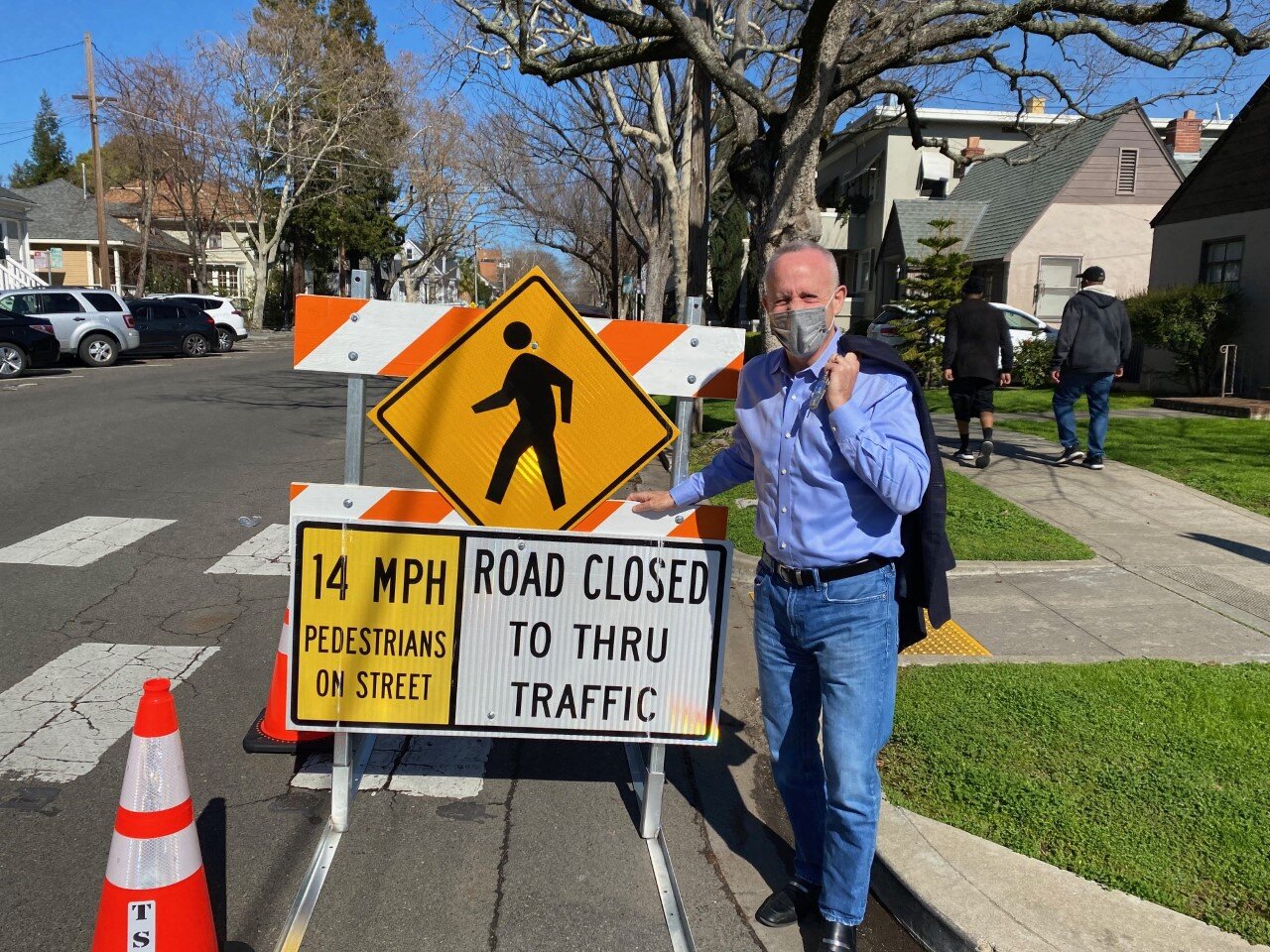Pedestrians, bicyclists get more room to roam as Midtown launches "slow and active streets" project
Partial street closure on 26th Street
Strollers, joggers and cyclists now have more room to roam safely in Midtown with the launch of the City’s first neighborhood-designed Slow and Active Streets project.
Sacramento Mayor Darrell Steinberg and Councilmember Katie Valenzuela, who represents Midtown, came out to see the closures after they were marked Friday with cones and signs. Streets now closed to through traffic include 26th Street between J and V streets; O Street between 22nd and 26th streets; and V Street between 21st and 26th streets. The partial closures cover 1.6 miles of streets. The City’s goal is to reach 6 miles.
Mayor Steinberg noted that implementing Slow and Active Streets was one of the recommendations that came out of the Mayors’ Commission on Climate Change. The City is working to carry out those recommendations, including an ordinance requiring electrification of new low-rise buildings.
“We start here in Midtown but we’re getting calls from all over the city now, from many other neighborhoods, and that’s exactly what we want,” Mayor Steinberg said of the Slow Streets project.
If you are interested in hosting a Slow and Active Street in your neighborhood, visit the City website here.
“I’m very excited and I hope this becomes something more permanent,” Councilmember Valenzuela said. “This is about making spaces for everybody, not just cars, especially when we’re trying to get outside and move around more.”
The project is funded through April but could be extended by the City Council.
A pilot has already been operating around the Land Park golf course for several weeks, but the Midtown project is the first one initiated and designed in partnership with neighborhood groups, in this case the Midtown Neighborhood Association and the Newton Booth Neighborhood Association.
“We are so happy to have this amenity in our neighborhood so people can safely walk bike and roll through Midtown,” said Abby Jackson, vice chair of the Midtown Neighborhood Association. “We hope this expanded public space can be a spot for everyone to enjoy and get outside, a place to safely social distance while meeting new neighbors.”
Cones and signs spelling out the restrictions on vehicle traffic have been placed at the end of each block included in the project. People who live on these streets, delivery drivers and emergency responders and business customers will still be able to access the streets, and area businesses will remain open with increased signage.
Sacramento joins about 100 cities nationwide, including San Francisco, Oakland, Berkeley and Los Angeles, to launch a Slow and Active Streets program since the start of the coronavirus pandemic in an effort to help people “relieve the physical and mental stress of just being home all the time,” said Jennifer Donlan Wyant, the City’s Transportation Planning Manager. She said her staff is working with neighborhoods all over the City.
“The communities are coming to us, and we love that.”
Donlon Wyant said the City is putting a priority on installing such pedestrian and bike-friendly street closures in under-resourced neighborhoods with lots of apartments and no yards, a policy applauded by Anne Stausboll, who chaired the Mayors’ Commission on Climate Change, a joint project of the offices of Mayor Darrell Steinberg and then-West Sacramento Mayor Christopher Cabaldon.
“This pilot is a wonderful beginning and will highlight the health and safety benefits of prioritizing walking and biking,” Stausboll said. “As the program expands, it’s important for the City to make sure that all neighborhoods benefit.”






